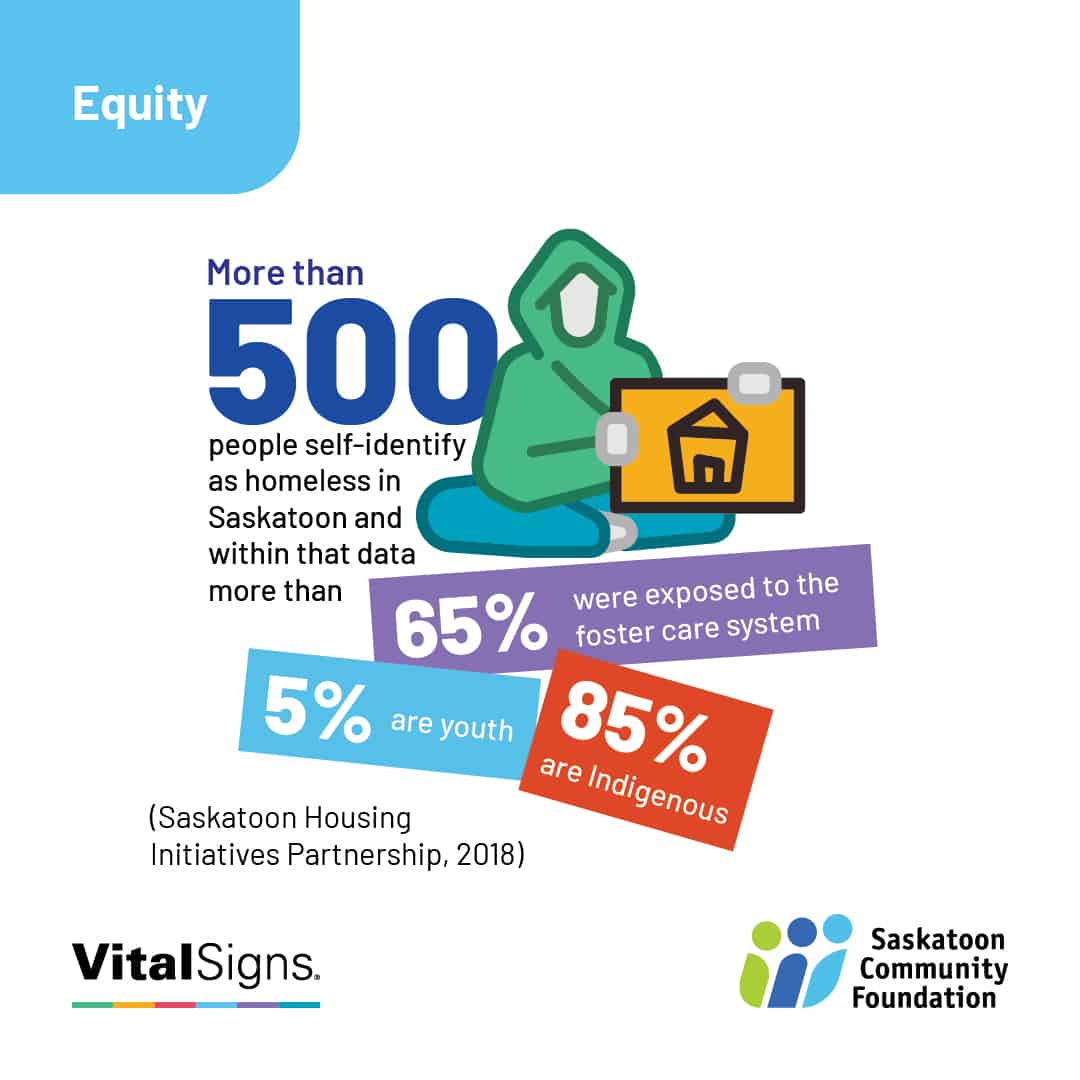Homelessness in Saskatoon: These organizations are building capacity to lift people up
As the number of people living without a home in Saskatoon continues to grow, the faces of homelessness are changing.
Robert LaFontaine, executive director of Saskatoon Housing Initiatives Partnership (SHIP), says that in years past, it was most common for older men with alcohol dependencies to be homeless. Now, people on the street are younger, have opioid addictions, and about 40 percent of the homeless population are women.
“There is an increasing number of homeless people with complex needs,” Robert said. “In the last few years, we have seen a rise in the number of young people with opioidopiod addictions. We don’t have enough treatment beds and we don’t have enough mental health services to address the growing number of people with opiod addictions.”
Combined with the impacts of residential school and the intergenerational trauma, and low housing vacancies and limited affordable housing stock, there is a perfect storm to create record-high levels of homelessness.
As of February 2024, the Saskatchewan Landlord Association reported that Saskatoon’s vacancy rate was two percent. For households earning the lowest 20 percent of income, only seven percent of properties are affordable, and most of those are unsuitable for families.
In addition to the lack of housing, shelters are at capacity.
All new beds created are celebrated in this environment, even if they seem like a small number.
SHIP applauds the Elizabeth Fry Society of Saskatchewan who will be opening a 10-bed property in November. Elizabeth Fry serves women who are criminalized or at risk of criminalization with the goal of keeping women out of institutions and helping them change their lives through safe, stable housing and comprehensive wrap-around supports that promote healing and long-term stability.
Building capacity to do more good
The Elizabeth Fry project recently received support from the Robert Steane Fund to Alleviate Homelessness (Be a Bob) through the Saskatoon Community Foundation. The fund targets human services that deliver measurable outcomes
Funding from Be a Bob will pay for a housing manager to run the property, and the position is designed to build the organization’s capacity to offer even more housing support.
Nicole Obrigavitch has been the executive director at the Elizabeth Fry Saskatchewan office for about a year and a half. She says that one of the first things she noticed when she started in the position was the lack of housing for the women they support.
“You can have the best bail plan or a great addictions program, but if you don’t have stable housing, you’re not going to be successful,” she said.
Salvation Army Crossroads is also receiving funding from Be A Bob to create a five-year position for a mobile caseworker supervisor. The mobile caseworkers support people living in the community with various landlords, working with them to remain housed.
The caseworkers help them navigate systems, connect with community resources, learn life skills like budgeting and grocery shopping, and provide advocacy to prevent evictions. Thus far, the program has been managed on the side of someone’s desk, and, as with Elizabeth Fry, this dedicated position will allow them to build the capacity to do more with it.
Last year, the Be a Bob Fund supported three other organizations to help them build capacity as well.
Community Legal Assistance Services for Saskatoon Inner City Inc. (CLASSIC) received funding for a community support worker who can help with housing issues; Central Urban Métis Federation Inc. (CUMFI) received funding for a transitional housing manager at their Community Homes property; and the YWCA Saskatoon received funding to hire a transitional housing manager.
“Other granting organizations will rarely allocate money to salary,” said Cara Bahr, YWCA Saskatoon CEO. “If you can’t utilize funding dollars to pay for salary, that’s tricky to navigate and not always effective. [Be a Bob] is providing unique funding streams to organizations that wouldn’t be able to access these supports otherwise.”
Filling the gaps
Major Gordon Taylor with the Salvation Army says he uses the warm-up shelter numbers as a measuring stick for how the homeless population has grown in Saskatoon.
In 2021-22, the warm-up shelter averaged 40 to 60 people per night. In 2022-23, it averaged about 80 people per night. So, for the winter of 2023-24, they planned to accommodate 80 to 100 people per night—and ended up seeing a huge jump, with 130 to 200 people needing shelter each night.
“All service providers in the sector have seen a lot of new faces over the last year,” said Taylor, the executive director at Salvation Army Crossroads in Saskatoon.
The Salvation Army in Riversdale offers enhanced shelter for men, meaning that people staying there must be involved in case management and be working to secure housing. But not everyone is ready for that.
“One of the big gaps in Saskatoon is a need for a basic emergency shelter,” Taylor said. These are the people who need the warm-up shelter. During the warmer months, they don’t look for shelter.
Taylor said there are gaps throughout the system, and no one gap is more important than another. Filling any gap helps prevent someone from falling through the cracks.
“There are so many different causes of homelessness,” Taylor said. “it doesn’t matter what system is in place. Sudden bankruptcy or drug addiction — some of the causes the system can’t prevent. My goal from a community perspective would be to always have those steps in place so someone can exit homelessness when they’re ready to.”
Working together
Nicole Obrigavitch with the Elizabeth Fry Society encourages Saskatoon residents to come together as a community to have compassion and understanding for community members who are most in need.
“We need to think about the kind of community we want to build — one where people feel safe because everyone has a stable place to call home, reducing the desperation that leads to unhealthy coping mechanisms and crime.”
She would also like to see non-profit organizations working together to lobby the government as a group, and for the provincial government to have its ministries work more closely together to look for solutions.
Elizabeth Fry Society receives funding from the Ministry of Corrections, Policing and Public Safety, but Obrigavitch is also interested in providing diversion programs that will keep women out of institutions and with their children and families.
“Ultimately, we all want the same things: we want a healthy people, healthy families, healthy communities. We don’t want people that end up homeless; we don’t want high crime rates as a result of poverty and survival-based crimes.”
Robert LaFontaine with SHIP agrees that the government needs to cooperate more, including all levels of government — municipal, provincial, and federal.
“We all have a responsibility to our neighbours,” he said. “We need to provide opportunities for our citizens who are homeless to be healthy, and housed.”
With multiple elections on the horizon, Robert also encourages residents to speak up about homelessness in the city.
“Make it an election issue so it becomes a community discussion,” he said. “The residents of this city need to understand that the most vulnerable of our citizens need compassion, and with grace they, too, can find ways to contribute to the health of our community. This issue has been around for 40 years. We need a permanent emergency shelter with contributions from all levels of government.”

